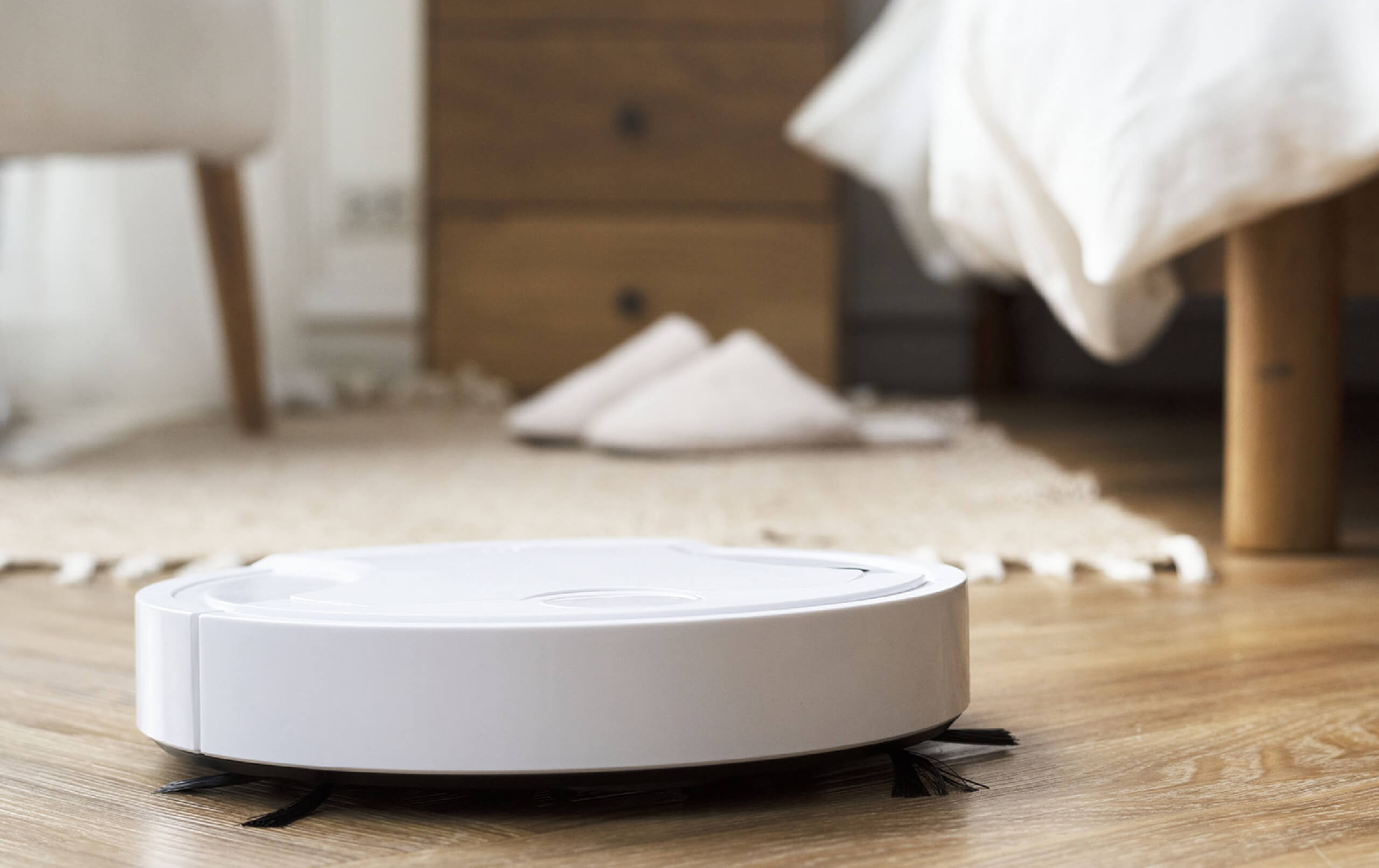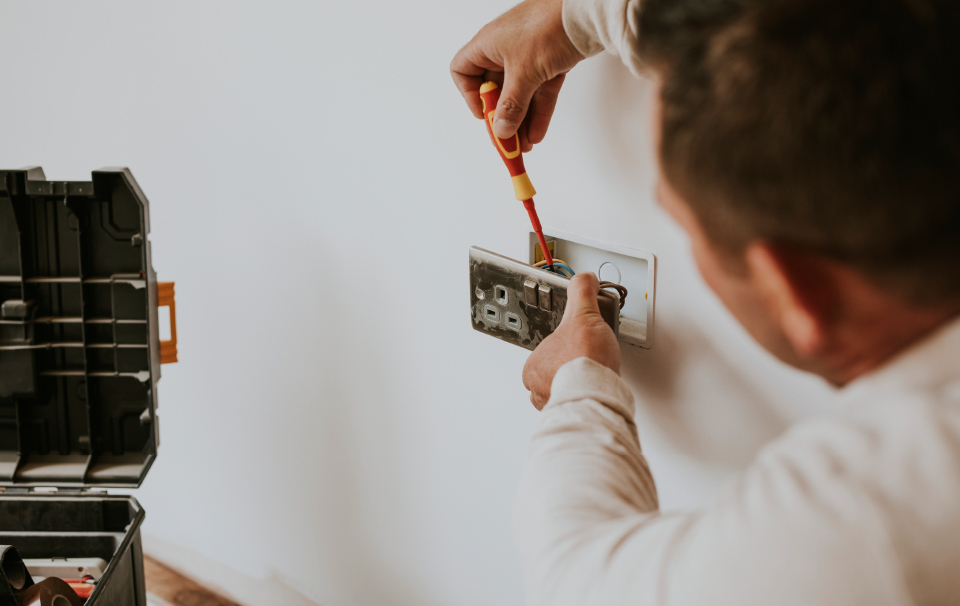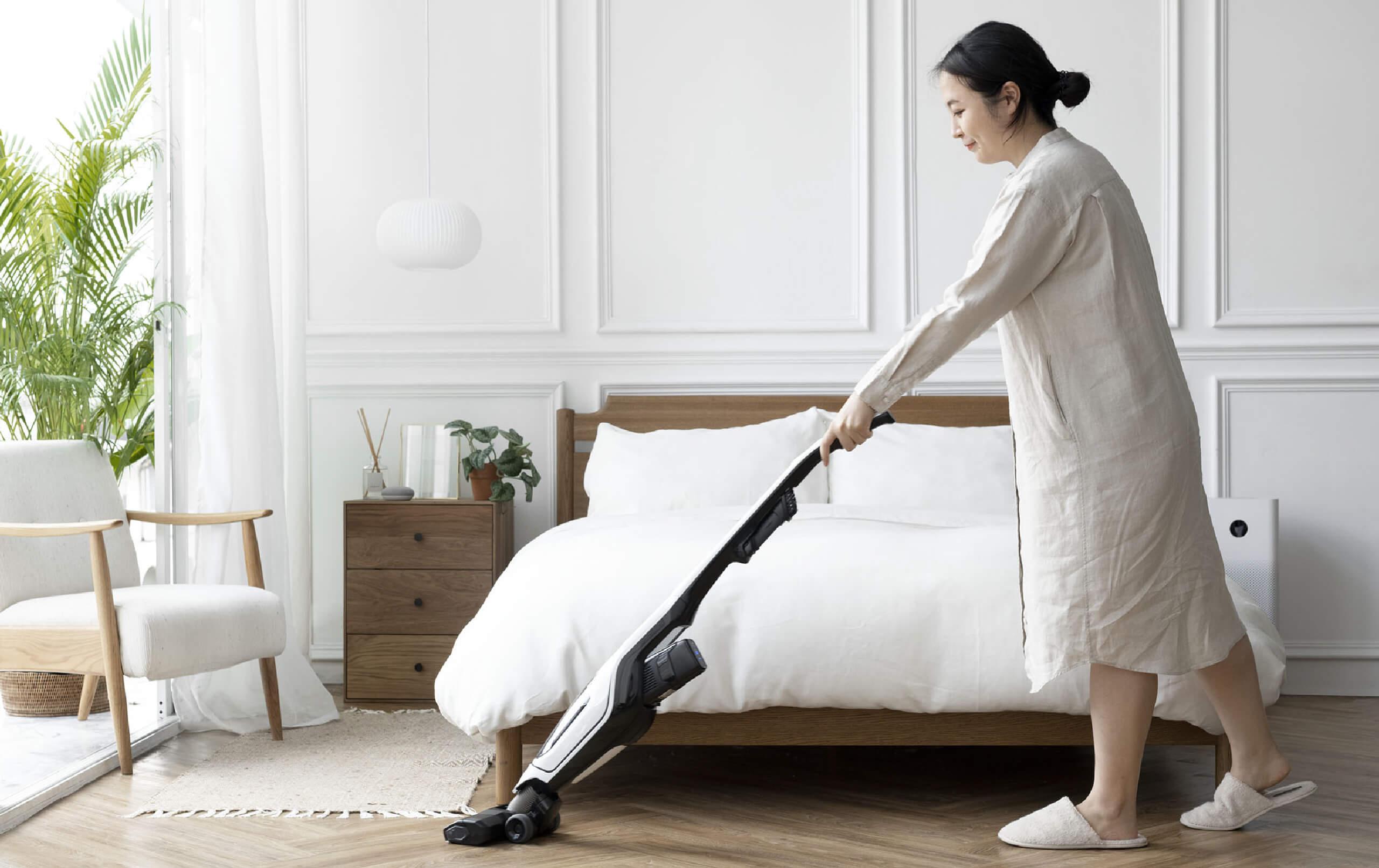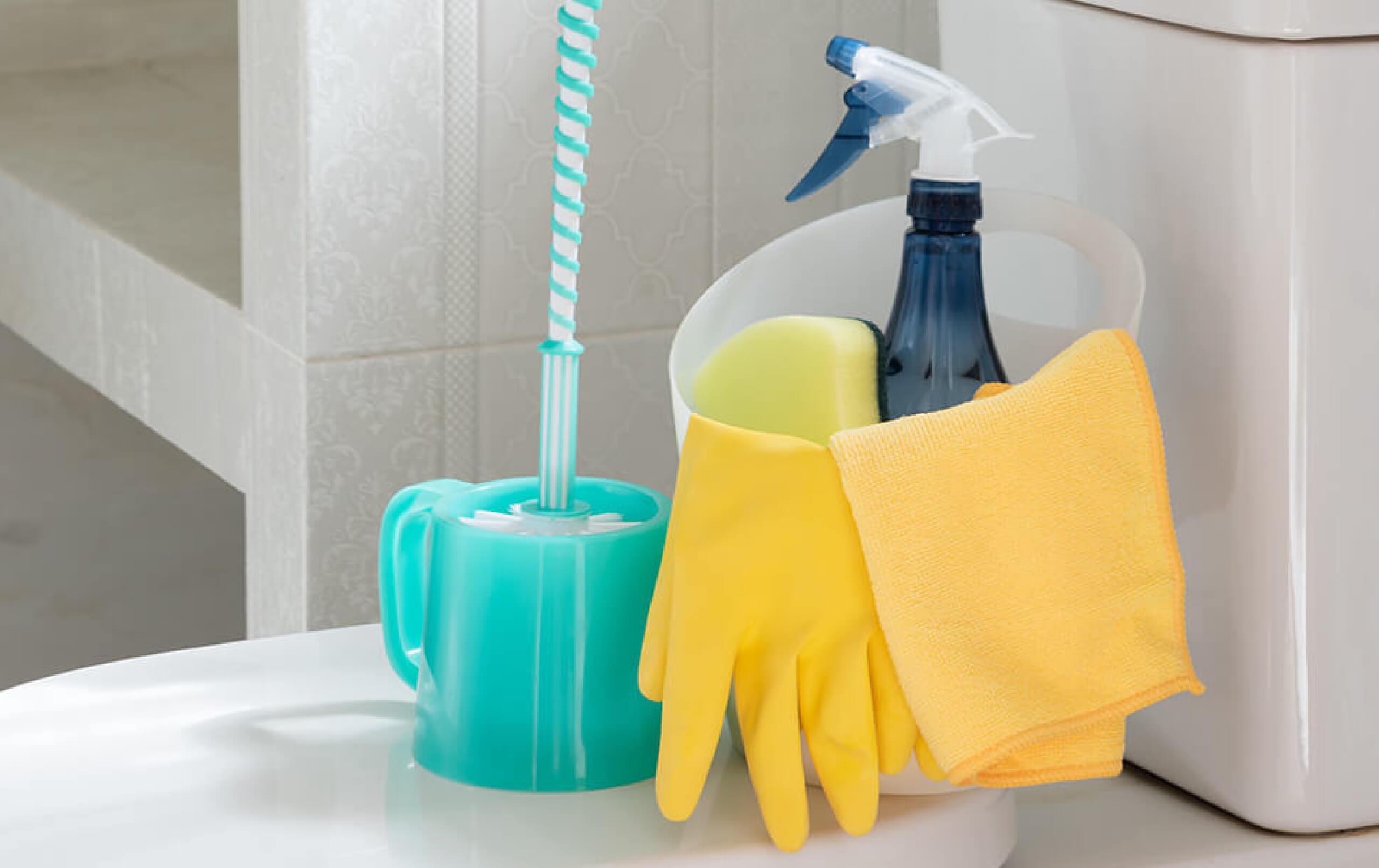Identify & Eliminate Air Pollutants in Your Home
6 minute read

Generally, when you think about air pollutants, you are most likely to conjure images of thick outdoor smog or dust. Many people consider that only outdoor air pollutants are harmful and hazardous to their health. Later, they are surprised to learn that indoor air pollutants are 2 to 5 times fatal than outdoor air pollutants.
What is indoor air pollution?
Indoor Air pollution is the poor quality of air in and around closed structures such as homes and buildings that are harmful to human health.
Some effects may show up immediately after the first exposure. These immediate effects include throat, nose, or eyes irritation, fatigue, nausea, headaches, and more. Such immediate effects usually stay for a short period which is curable.
While some effects might take years of repeated exposure or effects might show up after years of exposure. These long-term effects include respiratory problems, cancer, heart disease, and other serious issues.
According to the Environment Protection Agency (EPA), many Americans spend 90% of their time indoors, which makes almost everyone prone to indoor pollution. Due to this, it is essential to maintain quality air in our car, school, home, and offices for healthy surroundings.
Although it might seem easy to sweep when you see dust around, it is harder to know when your home needs cleaning as indoor pollutants do not come with tell-tale signs. These hazardous air pollutants are invisible, tiny microparticles that can cause adverse effects on your family’s health.
What are the types of indoor air pollutants?
According to the EPA, the top 5 air pollutants in America are indoor air problems. If you live with young children, pets, elderly adults, or with someone who has a breathing issue, improving home air quality should be your top priority. Also, older homes are more vulnerable than newly constructed ones.
To interpret this better, it is necessary to know the various types of indoor air pollutants.
The EPA has listed the 13 most common indoor air pollutants, out of which few are criteria pollutants. The National Ambient Air Quality Standards (NAAQS) has set six principal air pollutants in accordance with the Clean Air Act which are known as criteria pollutants. These air pollutants are harmful to the environment, health and can even cause property damage. Here are a few of the indoor air pollutants:
1. Indoor particulate matter
It is a complex mixture of solid and liquid particles in the air. These particles are of varied sizes and shapes, while some are visible to the naked eye in the form of smog, sand, and dust. The indoor particulate matter is generated from indoor sources such as cooking and combustion activities (fireplace, candle burning, heaters, smoking).
Health effects:
The particles with 10 micrometers in diameter or smaller are inhalable. Exposure to these inhalable invisible particles can cause severe heart and lungs problems. Kids, older adults, and people with lungs disease are at a greater risk from indoor particulate matter, which might even lead to premature death. Some more health impacts include:
- Aggravated asthma
- Eyes and throat irritation
2. Biological pollutants
Biological pollutants are produced by living organisms. It includes bacteria, animal dander/ cat saliva, fungus, pollen (originated from plants), mites, dust, and viruses. As a result, they are generated in places producing high moisture, water, and food. Further, wet floors or standing water can also serve as a breeding ground for insects, molds, bacteria, and mildews. These pollutants can be generated from dust accumulation and damp areas in the home, such as humidifiers, cooling coils, carpets, and more.
Health effects
- Allergic rhinitis
- Shortness of breath.
- Fever.
- Sneezing.
- Allergic Reactions.
3. Radon
Radon is one of the most toxic indoor air pollutants. As per the research held by the National Cancer Institute, radon is the second leading cause of lung cancer in America. Scientists estimate that this gas causes 15,000-22,000 lung cancer deaths each year in the U.S.
Radon is a radioactive gas released from the decay of soil and rocks. This gas is odorless, tasteless, colorless, and cannot be traced with the human eye. The decay of uranium that is found in soils moves up from the ground to the air above (known as radon) and can enter your home from cracks in walls, floors, pipes, cables, or from groundwater that contains radon. Usually, this gas does not cause significant health issues when you inhale it outdoors. But when it enters indoors the gas gets trapped, making it even more dangerous. A 2004 research article reveals direct links between radon in homes and lung cancer. It further concludes that smokers and recent ex-smokers are more prone to this indoor air pollutant.
4. Second-hand smoke
Second-hand smoke is also known as Environmental Tobacco Smoke (ETS). It is emitted by the burning of tobacco products, such as pipes and cigarettes. This smoke can highly impact the quality of the air indoors causing respiratory problems, especially to non-smoking individuals, kids, and old aged people.
Health effects
- Ear infection
- Chronic Cough
- Asthma
- Heart Disease
- Strokes
- Lung Cancer
Key findings reveal, there is no risk-free level if you are exposed to second-hand smoke. Additionally, non-smokers are exposed to developing 20-30% risk of lung cancer due to second-hand smoke. Get to know the additional effects of these air pollutants Centers for Disease Control and Prevention.
5. Carbon monoxide
Carbon Monoxide (CO) is one of the criteria air pollutants discharged by burning fossil fuels. This gas is extremely harmful as it reduces the amount of oxygen-carrying capacity of the body. While (traditionally found outside) one of the greatest contributors of Carbon Monoxide is vehicles, it can enter indoors from various sources such as gas heaters, leaking chimneys, stoves, tobacco smoke, fireplaces, woodstoves, and more. Here are a few common health effects caused by inhaling excessive Carbon Monoxide.
Health effects
- Nausea.
- Headaches.
- Dizziness
- Fever
- Impaired vision.
- Chest pain
- Angina.
- Confusion.
6. Nitrogen dioxide
Another hazardous, criteria air pollutant is Nitrogen Dioxide (NO2), belonging to the family of nitrogen gases. The primary source of indoor emission is the combustion process, such as kerosene heaters, welding, tobacco smoke, and more. Nitrogen Dioxide gas is highly precarious to those having respiratory disorders as it may enhance coughing and difficulty in breathing.
Health effects
- Excessive inhale of Nitrogen Dioxide may result in severe effects on Pulmonary Edema and lung injury.
- It generally affects the mucosa of the nose, eyes, and respiratory tract.
7. Identify indoor air pollutants
- If you are willing to move a step closer to a healthier home environment for your family, here is how you can identify air pollutants.
- If you notice excess moisture than usual at your home, it can be due to biological pollutants and an indication to measure the level of air pollutants.
- To identify air pollutants such as radon that cannot be encountered with the naked eye, purchase an Indoor Air Quality Monitor. This device will help you identify the levels of particulate matter pollutants, Air Quality Index, temperature, humidity, and more.
- To be on the safer side, purchase an Air Purifier for a healthy room atmosphere.
- Another way to identify air pollutants is if anyone from your family is facing the above-mentioned health issues.
8. Reducing air pollutants
Although we clean our homes regularly to prevent air pollution, toxic pollutants can enter our homes in several other ways. Most of the time, we unknowingly bring those pollutants.
Now that you are aware of indoor air pollutants and their effects, let us learn how to reduce air pollutants and get rid of those toxins.
Call a professional
One of the most common ways to prevent and check air pollutants is by calling a professional for quality checks. Also, if you encounter some issues related to lead, pollen, mold, it is any day better if a professional person takes care of the same.
Ventilation
Opening windows are the first and foremost important step to exchange indoor and outdoor air. Doing this will enable proper ventilation and avoid molds in places that have moisture. Also, it is not recommended during chilly outdoor temperatures. In such a situation, consider using air filters and getting HVAC (ventilation and air conditioning systems) checked regularly.
Ban indoor smoking
The most common indoor air pollutant is tobacco smoke. When a person smokes a cigarette, he/she emits harmful chemicals in the form of smoke that can cause lung cancer. To avoid this, it is advisable to smoke outdoors that can also reduce the risk of secondhand smoke in the household.
Control humidity
According to the EPA, maintain your home humidity levels from 30-60% to avoid mold growth. In order to maintain the levels, you can invest in a de-humidifier.
Bathe your pets
Bathe your pets regularly to avoid allergies from dander-causing bio-chemical pollutants. Also, vacuum often to reduce dust and fur.
Some more solutions for air pollutants
- Keep gas appliances properly fitted and adjusted
- Use exhaust fans vented outdoors.
- Use pesticides in recommended quantities. Use non-chemical methods as and when possible.
- Keep indoor spaces clean and dry.
- Use EPA-certified emission standard woodstoves.
- Fix water leaks promptly.
- Dust carpets regularly.
- Have a professional inspection at regular intervals.


















